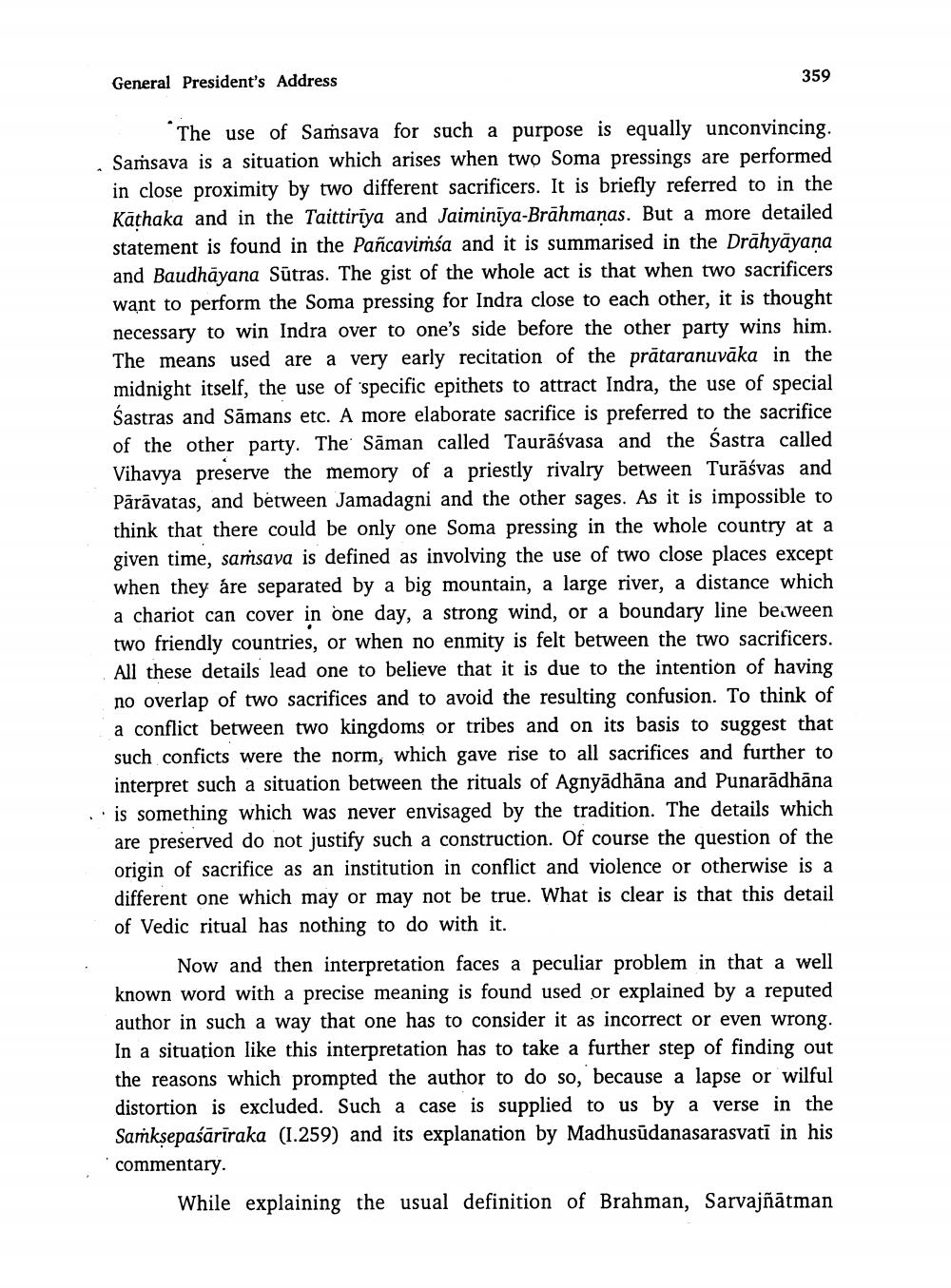________________
General President's Address
359
The use of Samsava for such a purpose is equally unconvincing. Samsava is a situation which arises when two Soma pressings are performed in close proximity by two different sacrificers. It is briefly referred to in the Kathaka and in the Taittiriya and Jaiminiya-Brahmanas. But a more detailed. statement is found in the Pañcavimsa and it is summarised in the Drāhyāyana and Baudhayana Sutras. The gist of the whole act is that when two sacrificers want to perform the Soma pressing for Indra close to each other, it is thought necessary to win Indra over to one's side before the other party wins him. The means used are a very early recitation of the prataranuvāka in the midnight itself, the use of specific epithets to attract Indra, the use of special Sastras and Sämans etc. A more elaborate sacrifice is preferred to the sacrifice. of the other party. The Säman called Taurāśvasa and the Sastra called Vihavya preserve the memory of a priestly rivalry between Turāśvas and Pāravatas, and between Jamadagni and the other sages. As it is impossible to think that there could be only one Soma pressing in the whole country at a given time, samsava is defined as involving the use of two close places except when they are separated by a big mountain, a large river, a distance which a chariot can cover in one day, a strong wind, or a boundary line be.ween two friendly countries, or when no enmity is felt between the two sacrificers. All these details lead one to believe that it is due to the intention of having no overlap of two sacrifices and to avoid the resulting confusion. To think of a conflict between two kingdoms or tribes and on its basis to suggest that such conficts were the norm, which gave rise to all sacrifices and further to interpret such a situation between the rituals of Agnyädhäna and Punarådhāna is something which was never envisaged by the tradition. The details which. are preserved do not justify such a construction. Of course the question of the origin of sacrifice as an institution in conflict and violence or otherwise is at different one which may or may not be true. What is clear is that this detail of Vedic ritual has nothing to do with it.
Now and then interpretation faces a peculiar problem in that a well known word with a precise meaning is found used or explained by a reputed author in such a way that one has to consider it as incorrect or even wrong. In a situation like this interpretation has to take a further step of finding out the reasons which prompted the author to do so, because a lapse or wilful distortion is excluded. Such a case is supplied to us by a verse in the Samksepaśäriraka (1.259) and its explanation by Madhusudanasarasvati in his commentary.
While explaining the usual definition of Brahman, Sarvajñātman




